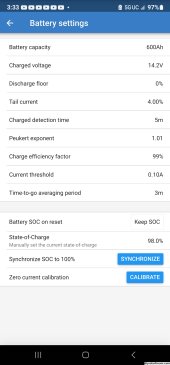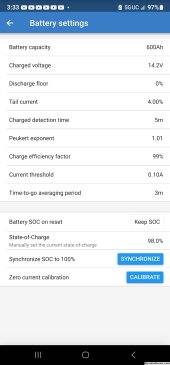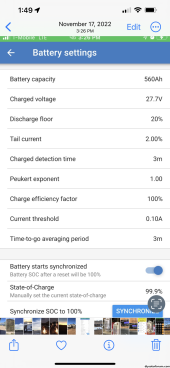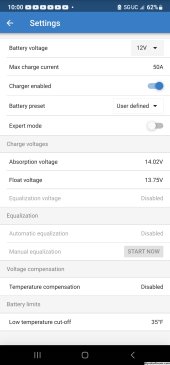Kcdaniels
New Member
- Joined
- Sep 22, 2019
- Messages
- 263
My system consists of...
600 ah lithium 12 v
Victron 2000 inverter
3 - Victron 100/50 charge controllers
Victron shunt 500
1430 watts panels on RV roof......
My question is after two or three days the shunt shows about 96% charge showing around 13.8 ?
I have changed the settings on the shunt without much affect..
Here is a screenshot of what I'm talking about. Is there something I'm missing ?
600 ah lithium 12 v
Victron 2000 inverter
3 - Victron 100/50 charge controllers
Victron shunt 500
1430 watts panels on RV roof......
My question is after two or three days the shunt shows about 96% charge showing around 13.8 ?
I have changed the settings on the shunt without much affect..
Here is a screenshot of what I'm talking about. Is there something I'm missing ?










